
Weird Festivals in the World
Humans have an affinity for celebrating the mundane and the ridiculous. If anything, it’s a testament to every culture’s ability to enjoy a good party, no matter the reason. And when it comes to celebration, festivals offer something for everyone. Whether it’s the arts and culture, food and wine, holidays, or religion you’re into, there’s a gathering somewhere with your name on it.
No matter where you go around the globe, everybody loves to celebrate. Here are some festivals that comprise the height of absurdity in theme or execution, and that’s what makes them so utterly enjoyable to participate in.
Kukur Tihar – Nepal
Whether or not you believe in dogs, this little Nepalese tradition will restore some of your faith in humanity. Each year, on the second day of the five-day Diwali celebrations in Nepal, the country celebrates Kukur Tihar or “day of the dogs” by worshipping man’s four-legged friend. Pooches of all kinds — strays and pets — are showered with flowers, adorned with garlands and tilak or gulal. After a ceremonial puja, they are treated to milk, eggs, meat, dog food or anything they like.

It’s not just Nepali and Indian people who celebrated their canine friends during the Day of the Dogs. People around the world decided to take part by paying tribute to their furry companions. All of this honor and recognition is nice for the dogs, but the best part of the festivities, especially for the homeless, is the food offerings that are an important part of the celebration.
Día de los Muertos – Mexico
Día de los Muertos, or Day of the Dead, festivities unfold over two days in an explosion of color and life-affirming joy. Sure, the theme is death, but the point is to demonstrate love and respect for deceased family members. In towns and cities throughout Mexico, revelers don funky makeup and costumes, hold parades and parties, sing and dance, and make offerings to lost loved ones. While the holiday originated in Mexico, it is celebrated all over Latin America with colorful calaveras (skulls) and calacas (skeletons). The rituals are rife with symbolic meaning.

Day of the Dead originated several thousand years ago with the Aztec, Toltec, and other Nahua people, who considered mourning the dead disrespectful. For these pre-Hispanic cultures, death was a natural phase in life’s long continuum. The dead were still members of the community, kept alive in memory and spirit – and during Día de los Muertos, they temporarily returned to Earth. Today’s Día de los Muertos celebration is a mash-up of pre-Hispanic religious rites and Christian feasts. It takes place on November 1 and 2 – All Saints’ Day and All Souls’ Day on the Catholic calendar – around the time of the fall maize harvest.
Noboribetsu Onsen “Naked Man” Festival – Japan
The Noboribetsu Onsen (hot spring) Festival takes place annually on February 3rd and 4th. Noboribetsu is one of Japan’s top onsen resort towns, located on the edge of a caldera – a volcanic crater lake – where you can see bubbling hot water that flows into rivers towards the town. Taking place on the northern island of Hokkaido in the bitterly cold depth of winter, the Noboribetsu Onsen “Naked Man” Festival may be one of the strangest. A bunch of nearly naked guys running around chucking hot water on each other on the coldest night of winter. All participants must change into a fundoshi, a Japanese loin cloth thong. There are always a few people who bring bottles of sake to drink while waiting for the event to start.

The way to stay warm and survive is to huddle together and shout “WASSHOI! WASSHOI!” Staying active is also a surefire way to keep warm. Keep moving, keep throwing water! Although Noboribetsu is a town tourists visit to relax, to stroll through Hell Valley, or to hit the many hiking trails around the volcano, it doesn’t take long to recognize the deep appreciation the locals have for the hot spring waters and the nature around them that keeps their livelihoods intact. That deep appreciation is never forgotten and is a reason why the Noboribetsu Onsen Festival exists.
Bavaria’s bizarre bell ringing – Germany
Every year the forests of Lower Bavaria enjoy a noisy festival that celebrates the ancient custom of herdsman ringing bells to scare wolves away. The Wolfauslassen ceremony is a noisy spectacle and a unique, ancient custom that only lives on in a few places in the forests of Bavaria and takes place every year in November. The Wolfauslassen was started by herdsmen in Lower Bavaria in the 18th century. It stems from a time when wolves and bears were common in the forests of Bavaria. The event is exciting for locals and visitors alike.
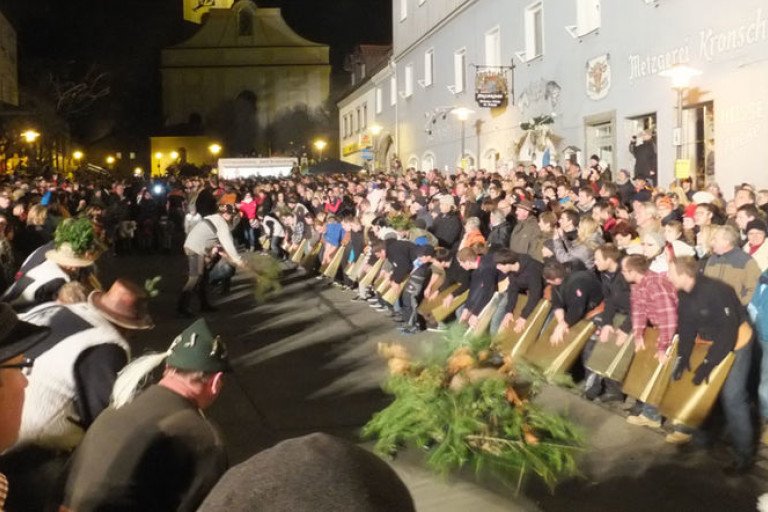
As darkness falls it all gets going. Men and women move through the village at night, ringing huge bells as they go. They leave the town hall and parade in three or four rows through the village, clanging their bells and cracking their whips. It’s no easy task, as some of the bells weigh more than 20 kilograms. The people of Bavaria identify themselves with the custom of their ancestors and therefore keep the tradition of the Wolfauslassen alive. This traditional event gives visitors an authentic insight into what makes Bavaria and its people so distinctive.
Boryeong Mud Festival – South Korea
It is the one and only festival where you can make your childhood dream of rolling in the fresh mud come true. Boryeong Mud Festival is the hottest global event where you can forget about your stressful adult life, frolic in the mud and spend a carefree weekend with your new friends. Chill in the mineral rich mud baths and chase the summer heat away! Mud is not the only thing that will be waiting for you.

You can always enjoy the romantic scenery of Daecheon Beach together with your special someone or swim in the crystal-clear sea after a long day of rolling and splashing in the mud. Then rock the night out at one of the many beach party venues to your favorite K-pop and EDM beats! If it already doesn’t sound like heaven, add a frosty cold can of beer to your hand and voilà – the recipe for the best adventure in Korea is ready! Located only 2 hours away from Seoul, the festival is easily accessible from anywhere in the country by convenient public transportation.
Monkey Buffet Festival – Thailand
Every year, the city of Lopburi, in central Thailand, goes to the monkeys. On the last Sunday of November, residents host a feast exclusively for 3,000 long-tailed macaques. Serving massive towers of colorful fruit and vegetables, as well as just about every sweet you can imagine, the festival is held as a “thank you” from locals to the monkeys for attracting tourists to their city. Due to a millennia-worth of human habitation, the city boasts countless ancient sites dating from a variety of civilizations and dynasties. The monkeys of Lopburi interact with locals and tourists throughout the year. And they live among the ruins of the ancient Khmer Empire.
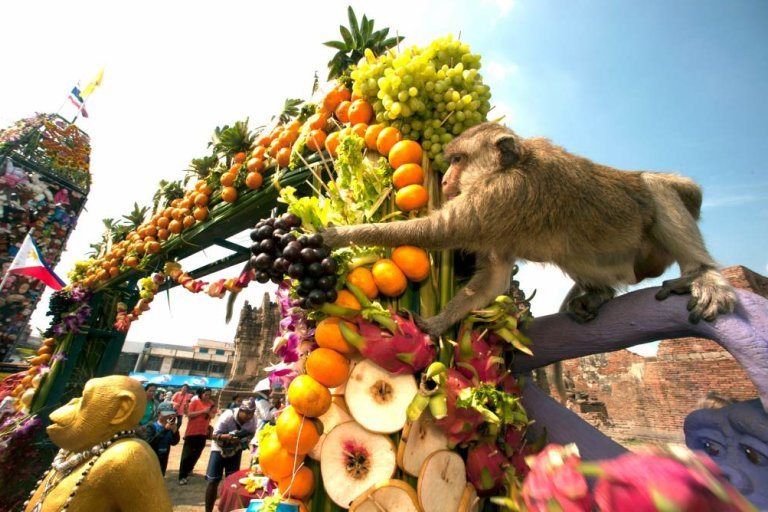
In the week leading up to the festival, locals pass out “invitations” to the monkeys with cashews attached to them as a small incentive. The action centers around the ruins of the 13th-century Phra Prang Sam Yot Temple where about half of Lopburi’s monkeys live. The Monkey Buffet Festival begins with performances by dancers dressed in monkey costumes. They dance to gain the attention of the macaques. Soon, thousands of macaques are drawn from the jungle and into the temple ruins by the spectacle. There, they partake in a feast of truly epic proportions. Beyond tons of food and plenty of primate mischief, the buffet celebration includes vibrant musical and dance performances, highlighting the richness of Thai culture.
Haro Wine Festival – Spain
The battle of the wine in Haro, Spain is a Spanish fiesta like no other. It is messy, wet, hot and sticky but undoubtedly exuberant, crazy, juvenile and magnificent. Its total pure superfluous fun and frivolity in a totally unique location. The Haro Wine Festival is held each year from the 28th to the 30th of June with the major focus being the Haro wine battle itself. Most combatants adorn the traditional red and white garb, then early on the morning of the 29th, follow the mayor of Haro (who is on horseback) on a 7 km procession out of town, up into the cliffs of Bilibio, to the Hermitage of San Felices.
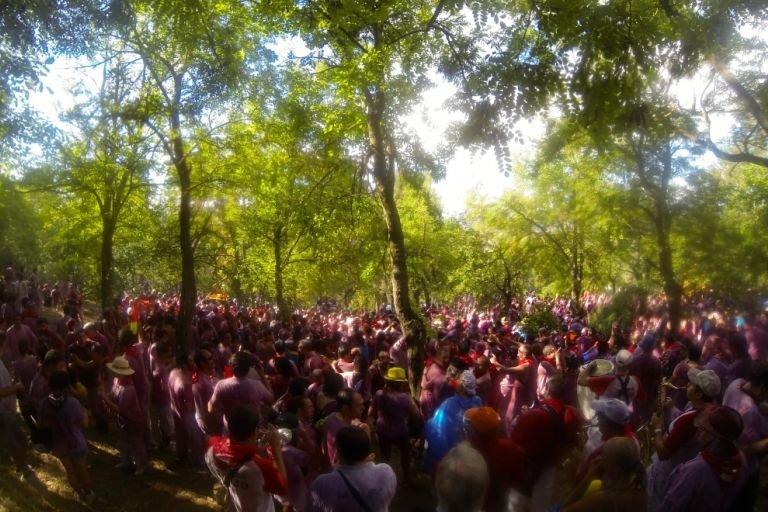
A flag is then ceremoniously located and a short mass is endured before red, wet carnage ensues and everyone covers each other with wine splashed from all manner of containers like buckets, cups, bottles, jugs and even water pistols. But overall, just be sure to drink plenty of that delicious red wine and join in all the fun of the Haro Wine Festival! In Spanish this unbelievable, exuberant, crazy and mad wine festival is called the Batalla del Vino en Haro. This is an event everyone should aim to tick off their travelling wish list.
Krampushnacht – Austria
Stemming from centuries-old folklore from the Alpine-nations, Krampusnacht is a night in early December dedicated to the maleficent half-demon and half-goat creature, Krampus. In Austria and across the German-speaking Alpine region, the demonic character is a crucial part of the holiday season. According to legend, on the evening of December 5, Krampus would creep out from his lair to punish disobedient children by whipping them with his switch and dragging them to the underworld.
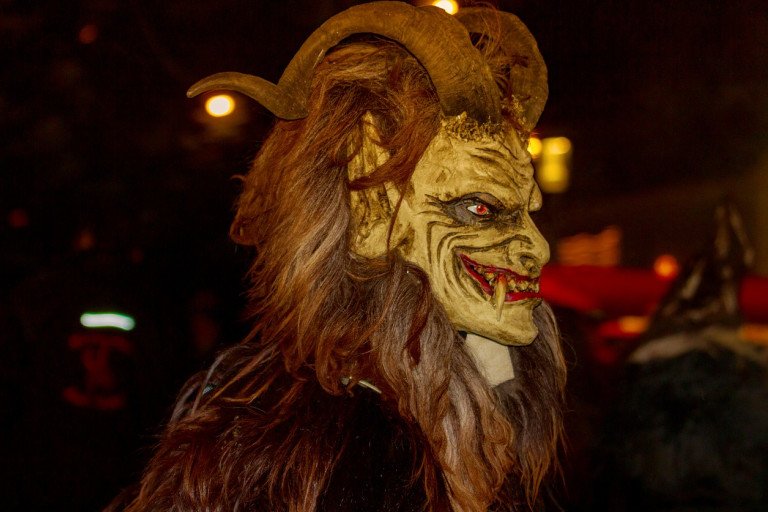
In more recent times, entertainment and inebriation are the two main goals. Been naughty this year? Clean up quick or risk the wrath of this ancient, tongue lashing, stick-wielding demon. In short, Krampus is the traditional bad cop to Santa Claus’ good cop. While the purpose was to instil fear and good behaviour in little-ones, today the event has become more of an excuse to honour the alpine Halloween-meets-Christmas tradition with good old-fashioned merrymaking: great food, ever flowing drinks, elaborate costumes and fanfare in abundance.
Alba White Truffle Fair – Italy
The International Alba White Truffle Fair stands out, every year, as the most important event in the world dedicated to the “King of Mushrooms”, the Tuber magnatum Pico. An event that, for eight weeks, turns the spotlight on Alba, on the hills of Langhe, Roero, Monferrato, on quality food and the excellence of Italy. The heart of the Fair in October and November is the Alba White Truffle World Market, the ideal place to appreciate and buy truffles from the Langhe, Monferrato and Roero area. The white truffle of Alba grows spontaneously, in symbiosis with specific trees or shrubs. These areas are characterized by an extremely delicate environmental balance, which need a special attention and agronomical care.
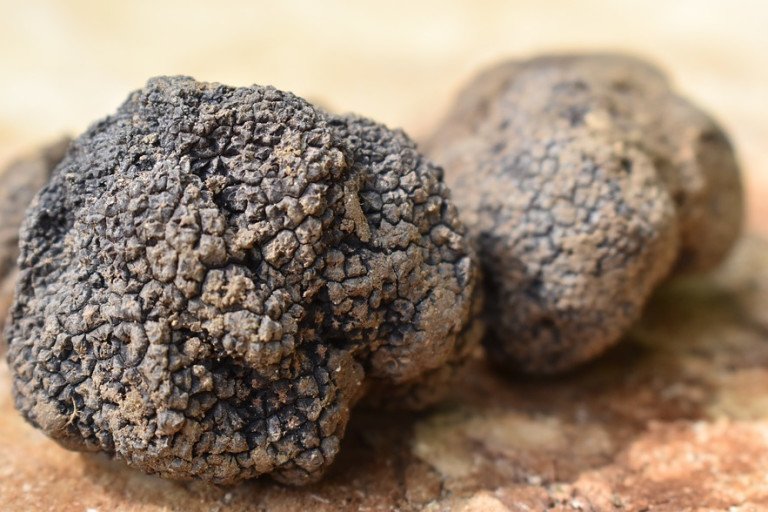
A truffle-hunter along with his dog goes into the woods searching for this valuable hypogeum fungus, guided only by the animal’s nose and by the insightfulness gained through years of experience. This is the most exciting moment for a truffle lover. While you are in Alba for the Alba White Truffle Fair, you can also enjoy the beautiful landscape of the Langhe, Roero and Monferrato to visit other places: castles, museums and ecomuseums, sanctuaries and churches, archaeological sites, but you can also make the most of the facilities for a moment relaxation and wellness, or to treat yourself an excursion through the vineyards on foot, by bike or by carriage!
Now that you took a look at our picks for some of the weirdest festivals in the world, if you have experienced any other crazy awesome festivals anywhere in the world that you feel should be on the list, let us know in the comments below.

